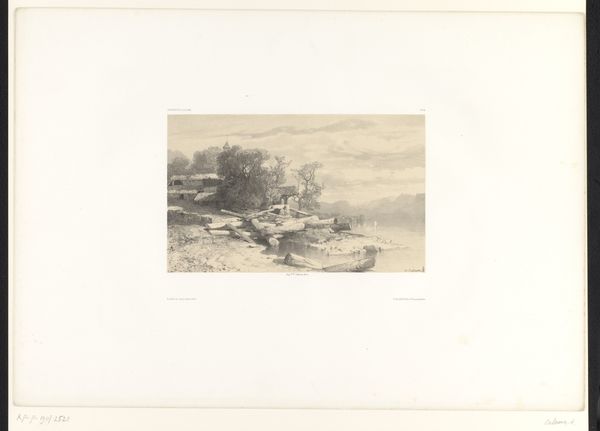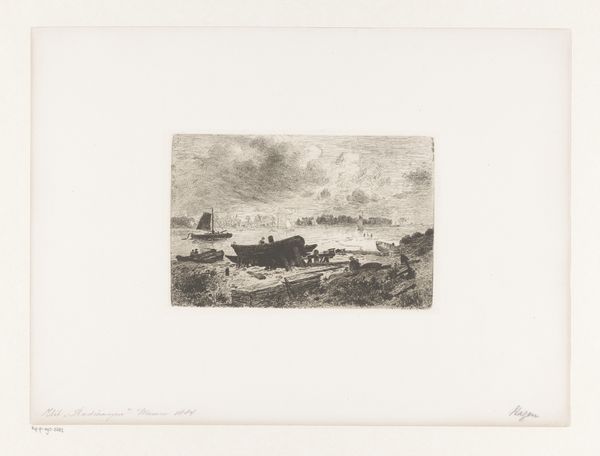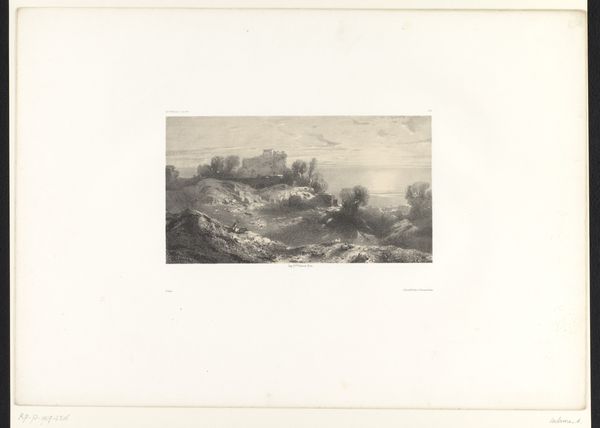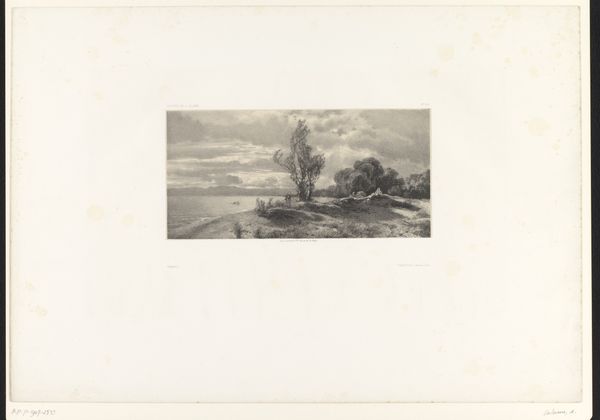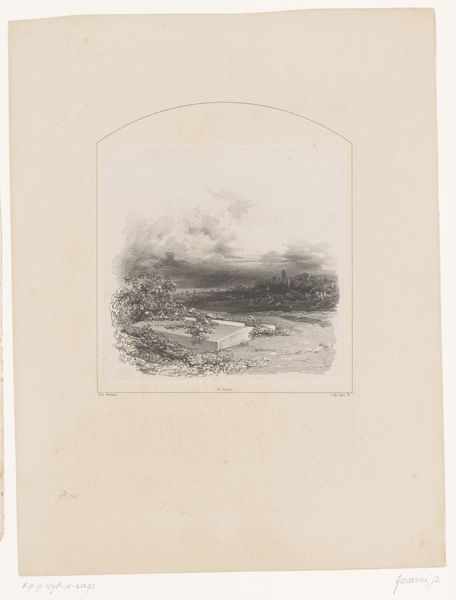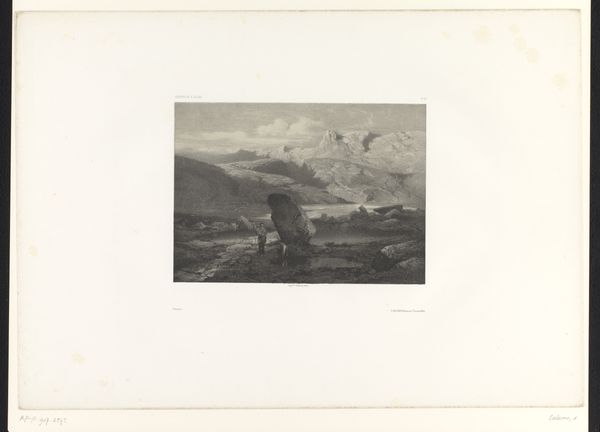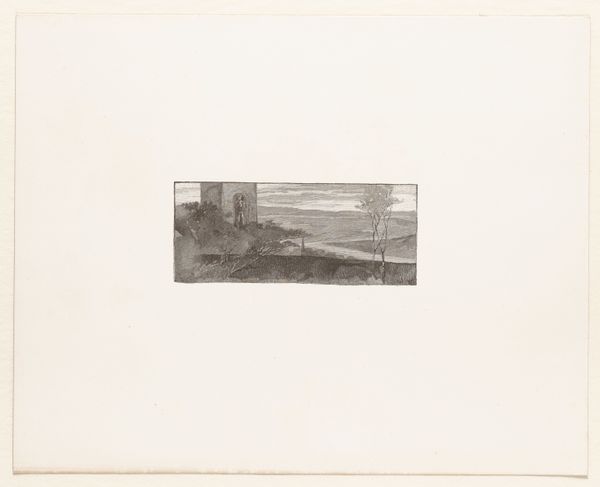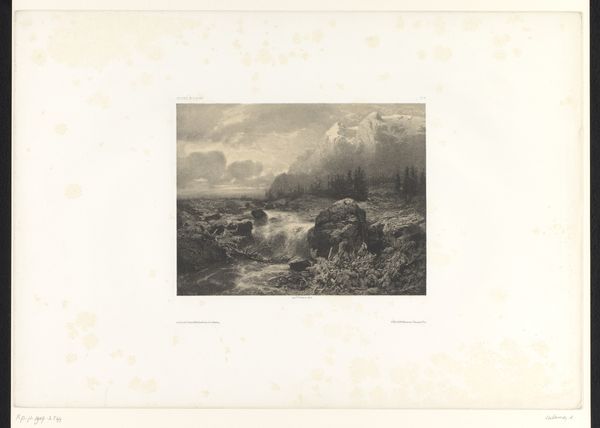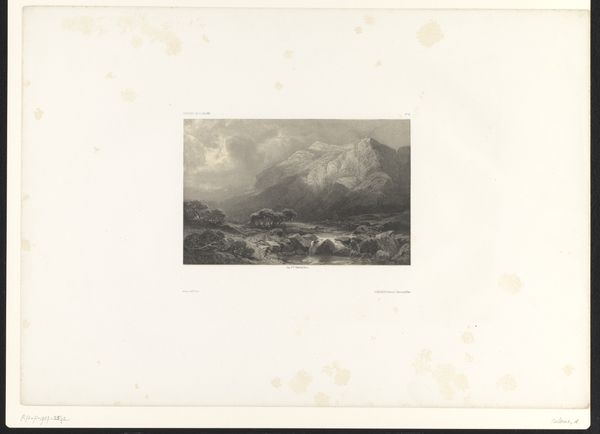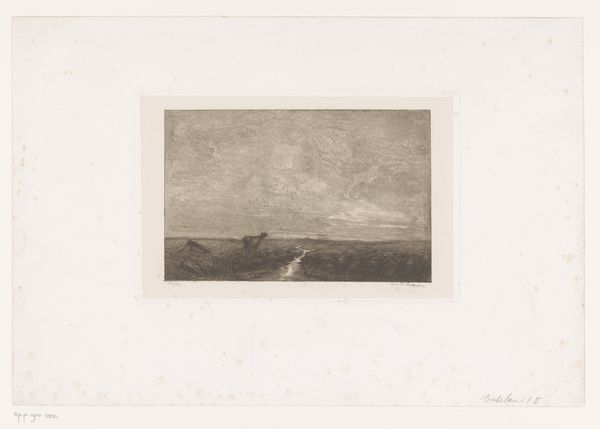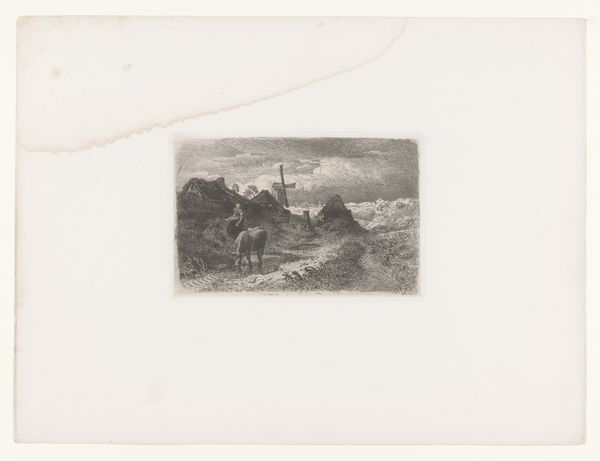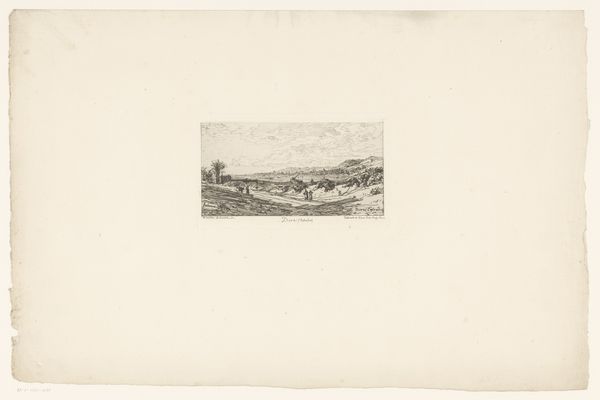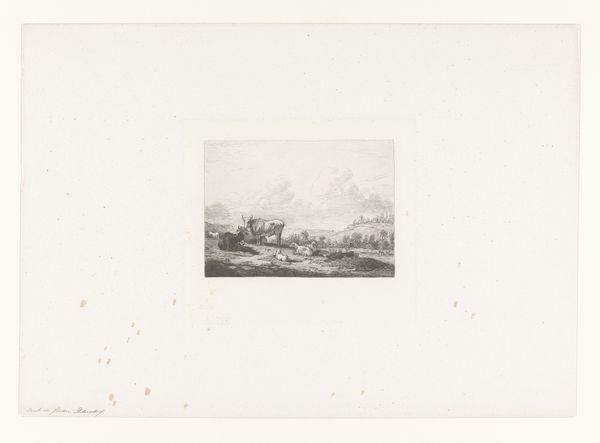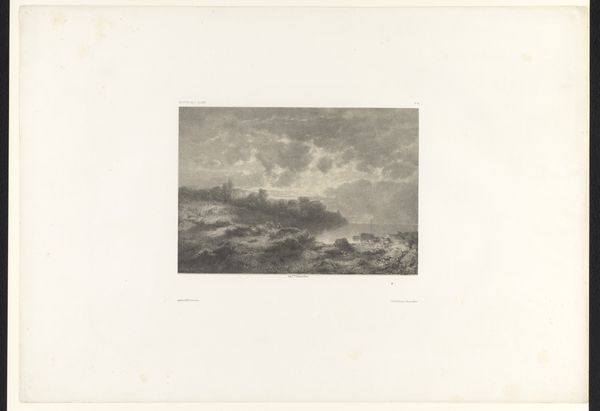
Dimensions: height 390 mm, width 561 mm
Copyright: Rijks Museum: Open Domain
This lithograph, Berglandschap met meer, was produced by Alexandre Calame in Switzerland, likely sometime in the mid-19th century. Calame was a leading figure in the Romantic movement, and his work often idealized the natural world. Looking at this lithograph, one can see how the image creates meaning through visual codes and cultural references. The sublime landscape, with its rugged mountains and tranquil lake, evokes a sense of awe and reverence for nature. This was a common theme in Romantic art, which sought to capture the emotional and spiritual power of the natural world. Switzerland's unique geography, with its towering mountains and pristine lakes, undoubtedly influenced Calame's artistic vision. The country's history of political neutrality and its reputation as a haven for free thinkers may have also contributed to the Romantic movement's celebration of individualism and freedom. To understand this artwork better, we might consult period travel guides, scientific treatises on mountain formations, and studies of the art market in 19th-century Europe. Art, after all, gains its fullest meaning from its social and institutional context.
Comments
No comments
Be the first to comment and join the conversation on the ultimate creative platform.
